Let’s be honest—most of us want to do better for the planet, but we don’t want to give up comfort, style, or a little thrill behind the wheel. That’s exactly where the Mercedes A & B-Class plug-in hybrids come in. They don’t shout about saving the world. They just quietly do it—mile by mile, charge by charge.
You get the classic Mercedes-Benz luxury you know and love—sleek design, high-tech features, and a smooth ride—but with an electric twist. These aren’t your typical compact cars. They’re smart, efficient, and surprisingly fun to drive. Whether you’re zipping through the city in full electric mode or cruising down the motorway with the petrol engine backing you up, they offer the best of both worlds.
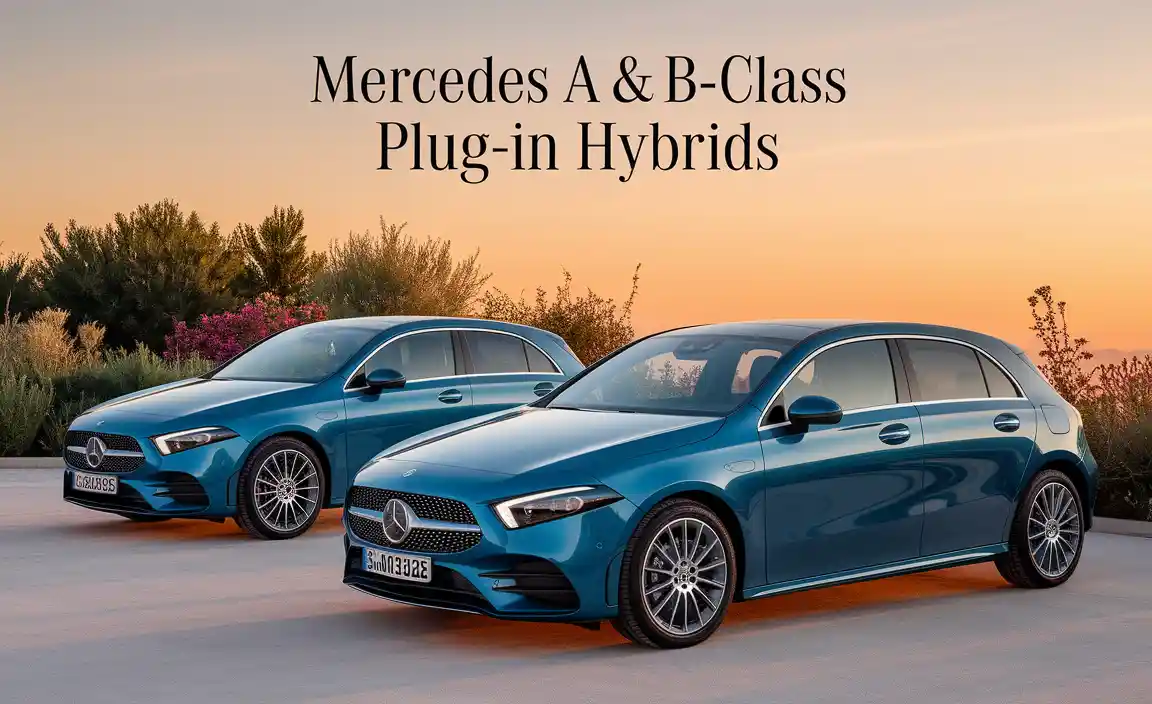
And the best part? You don’t have to be an EV expert to enjoy them. They’re built for real people with real lives. School runs, work commutes, weekend getaways—these compact hybrids handle it all, without breaking a sweat (or the environment).
A Quick Look: What Are Plug-In Hybrids?
Before we get into the specifics, let’s talk PHEVs—Plug-in Hybrid Electric Vehicles. These cars combine a traditional petrol engine with an electric motor and rechargeable battery. The idea? You get the best of both worlds:
- Pure electric driving for short trips
- Petrol backup for longer journeys
- Reduced emissions and fuel savings
Unlike mild hybrids, plug-ins can actually drive significant distances in electric-only mode, often up to 70–80 km, which is more than enough for most daily commutes.
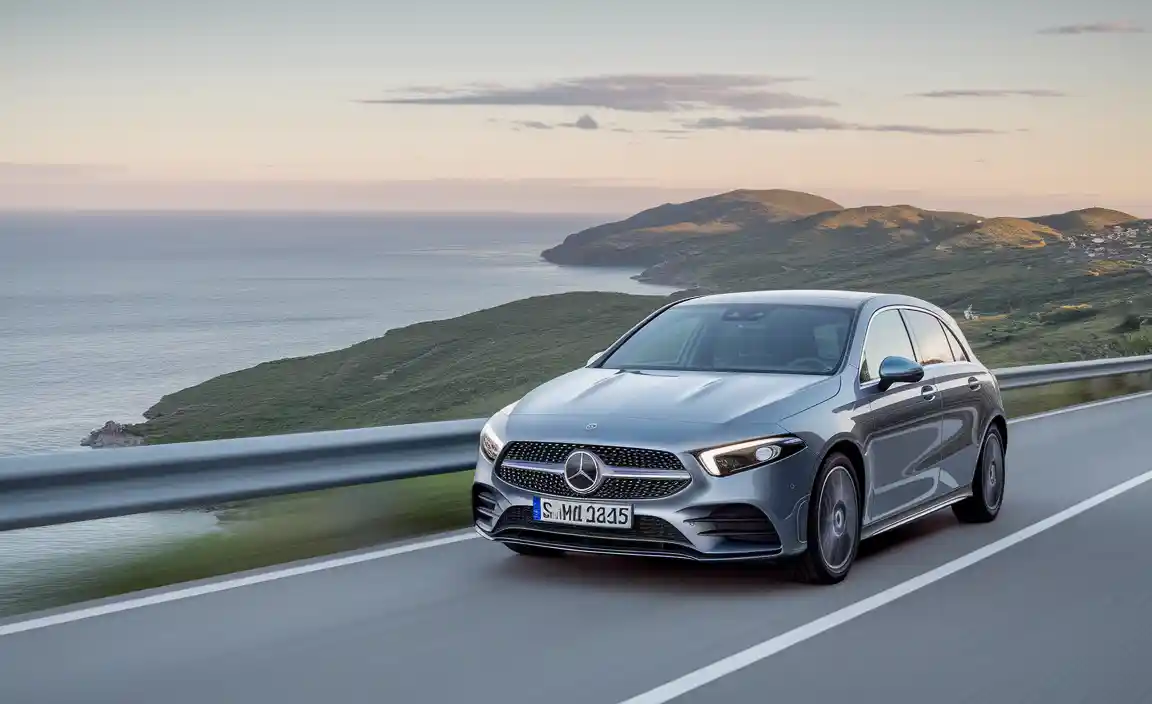
A-Class Plug-In Hybrid (A250e): Urban Chic Meets Electrified Grit
The Mercedes A250e is based on the brand’s ultra-popular A-Class hatchback and sedan lineup. Stylish, youthful, and brimming with smart tech, it’s a compact car with a surprisingly mature heart.
Powertrain & Performance
- Engine: 1.3L turbocharged four-cylinder (co-developed with Renault)
- Electric Motor: 75 kW motor
- Total Output: 218 hp and 450 Nm of torque
- Battery Size: 15.6 kWh lithium-ion
- Electric Range: Up to 70–75 km WLTP
- 0–100 km/h: Just 6.6 seconds!
The A250e may be a plug-in hybrid, but it moves like a proper hot hatch. Whether you’re zipping through tight urban streets or taking off at the lights, it has punch—and then some.
Charging Times
- Home Wallbox (7.4 kW): 1 hour 45 minutes (0–100%)
- DC Fast Charging (24 kW): 0–80% in just 25 minutes
- Regular Household Socket: ~5 hours
Most owners charge overnight or while parked at work—seamless and stress-free.
B-Class Plug-In Hybrid (B250e): The Practical Family Hero
The Mercedes B-Class may not make headlines like its flashier siblings, but in the plug-in world, it’s a hidden gem. The B250e is essentially a taller, roomier A-Class—with the same tech under the skin.
Who’s It For?
This one’s aimed at families, active retirees, or anyone needing extra headroom and boot space without upgrading to a full SUV. You’ll find:
- Higher seating position
- Bigger rear legroom
- Expanded boot (despite battery)
It’s just as smart and stylish as the A250e, but with added everyday usability.
Specs Overview
- Same Powertrain: 1.3L petrol + 75 kW electric motor
- Electric Range: Around 70 km WLTP
- Charging Times: Identical to A250e
Tech & Interior: Premium In Every Way
Climb into either the A250e or B250e and you’ll instantly know it’s a Mercedes-Benz. From the dual digital displays to the soft ambient lighting, it feels like a proper luxury experience—even in the compact class.
Standard on both hybrids is MBUX (Mercedes-Benz User Experience)—one of the best infotainment systems on the market. Features include:
- Dual 10.25-inch screens
- “Hey Mercedes” voice control
- Smartphone integration (Apple CarPlay/Android Auto)
- Navigation with Electric Intelligence (routes based on charging stations)
Interior Highlights
- Optional leather upholstery and heated seats
- Mood lighting in 64 colors
- Panoramic sunroof available
- Folding rear seats for added flexibility
Even in base trims, the cabins feel futuristic and high-quality.
Driving Experience: Smooth, Silent, Surprising
Hit the Start button and there’s silence. In EV mode, both models glide away with instant torque. It’s eerily quiet—until you floor it, and the petrol engine joins in with a subtle hum.
Seamless Hybrid Transitions
Mercedes nailed the hybrid logic. The transition between electric and petrol power is barely noticeable. It all happens behind the scenes:
- Brake regeneration slows you down while topping up the battery
- EV mode activates automatically in cities
- Hybrid mode uses both sources for balance
In short, you’re always driving efficiently—without thinking about it.
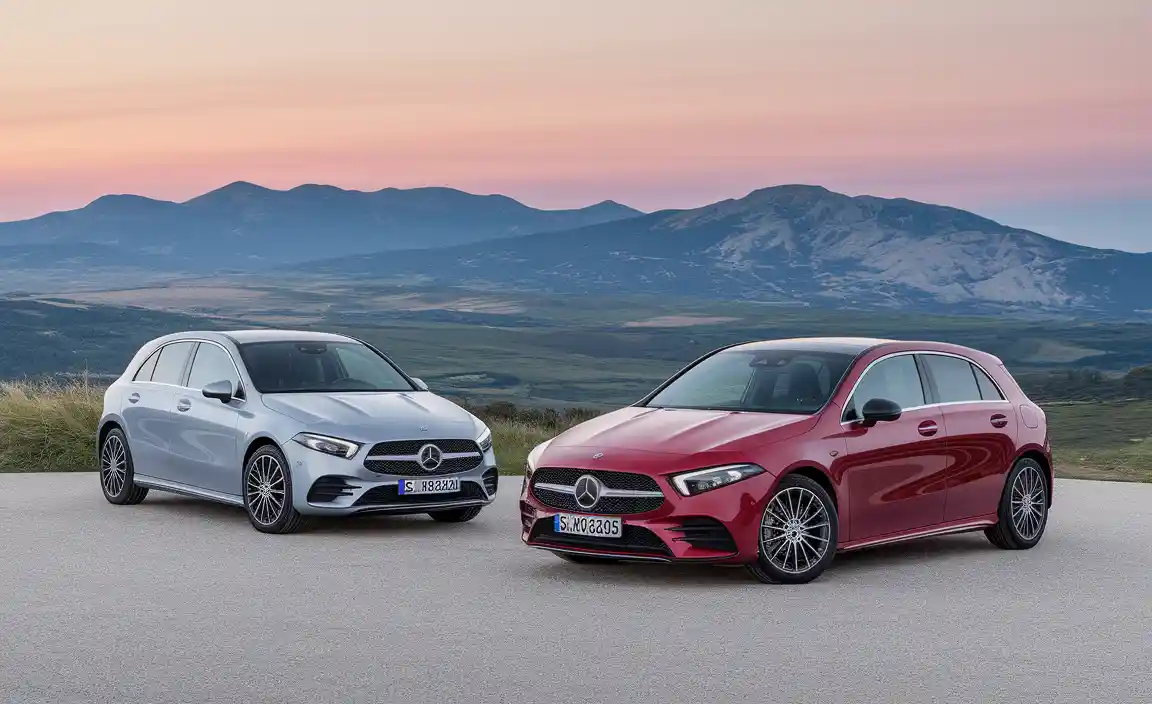
Fuel Economy & Emissions: It Pays To Plug In
This is where these plug-in hybrids shine.
- Official Fuel Consumption: As low as 1.0–1.3L/100 km
- CO2 Emissions: As little as 25–30 g/km
In real-world terms? If your daily driving is under 70 km and you charge regularly, you could go weeks without using any petrol. Long trips? No problem. The combined hybrid system kicks in and delivers up to 700–800 km of range.

Ownership Costs: Affordable Luxury
Sure, these are premium vehicles—but they can actually save you money.
Running Costs
- Electricity is cheaper than petrol
- Lower road taxes (in many EU countries)
- Government incentives for PHEVs
- Minimal fuel use if charged often
Maintenance Benefits
Electric motors have fewer moving parts. That means:
- Less wear and tear
- Longer brake life (thanks to regen braking)
- Software updates keep things fresh
Practicality: Can A Plug-In Be A Daily Driver?
Absolutely. Both the A250e and B250e are built for real-life use.
A-Class Practicality
- Boot space: 310L (hatch), 345L (sedan)
- Rear seatbacks split 40:20:40
- Fine for couples or small families
B-Class Practicality
- Boot space: 405L
- More headroom, upright rear bench
- Perfect for strollers, groceries, and gear
The battery sits under the rear floor, so space is slightly reduced vs. non-hybrid models—but it’s still more than usable.
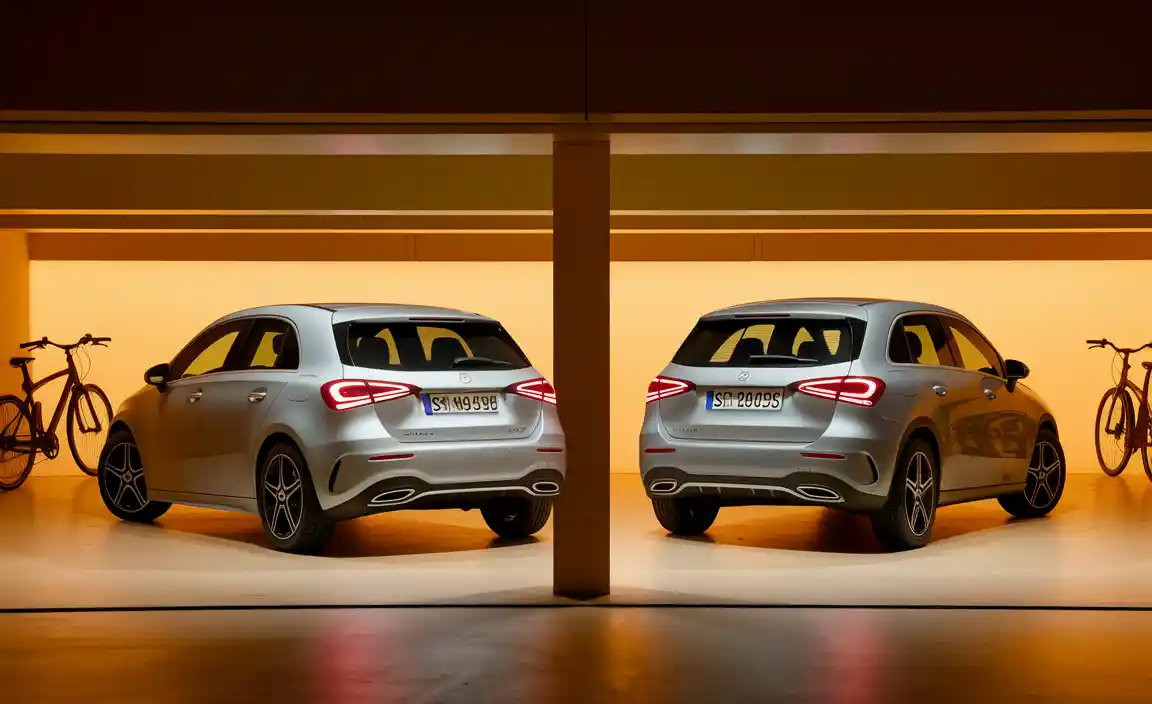
Safety: Mercedes Doesn’t Compromise
Both hybrids come packed with standard and optional safety tech:
- Active Brake Assist (autonomous emergency braking)
- Lane-keeping and blind spot assist
- Adaptive cruise control
- Traffic sign recognition
- Optional parking assist
It’s peace of mind wrapped in a stylish shell.
Charging Network & Infrastructure: Getting Better Every Day
Whether you’re in Europe, the UK, or parts of Asia, charging is becoming easier and faster. Mercedes helps by:
- Offering a Mercedes me Charge app to find stations
- Partnering with providers like IONITY
- Including access to AC and DC networks
You can also install a home wallbox or use public fast chargers. In fact, some shopping malls and workplaces offer free charging.
Who Should Buy The A250e Or B250e?
These plug-in hybrids are for people who:
✅ Want to lower their emissions
✅ Drive mostly in cities but take the occasional road trip
✅ Love tech, comfort, and premium features
✅ Aren’t ready to go full EV yet
✅ Want to future-proof their ride
Whether you’re a single commuter or a family of four, there’s a compelling case for going plug-in.
How Do They Compare With Rivals?
Let’s stack up the A250e and B250e against similar plug-in hybrids:
| Car | Electric Range | Power | Price (Approx.) | Interior Quality |
| Mercedes A250e | ~70 km | 218 hp | Mid-$40Ks | Premium |
| BMW 225e xDrive Active Tourer | ~80 km | 245 hp | Mid-$50Ks | Premium |
| Audi A3 TFSI e | ~60 km | 204 hp | Mid-$40Ks | Premium |
| Toyota Prius Plug-in | ~60 km | 122 hp | Low-$30Ks | Basic |
Verdict: The A250e offers a sweet spot of value, tech, and real-world performance, while the B250e delivers unbeatable practicality with the same powertrain.
Significance In Sustainable Mobility
We’re living through a silent revolution. The kind where tailpipes go quiet and electricity hums in the background. Mercedes-Benz A- and B-Class plug-in hybrids aren’t just cars—they’re part of a bigger story about cleaner air, smarter tech, and a greener planet. These compact hybrids blend a traditional combustion engine with an electric motor, striking a perfect balance between eco-friendliness and real-world usability.
Shift In Automotive Industry Towards Electrification
Remember when electric vehicles (EVs) were rare and futuristic? Today, they’re becoming the norm. The automotive industry is racing toward electrification. And not just because it’s trendy. Global emissions regulations are tightening, cities are banning old diesel engines, and consumers want more efficient options. Plug-in hybrids, like the Mercedes B and A-Class models, offer a crucial bridge between gasoline and all-electric cars.
Mercedes-Benz’s Commitment To Sustainability
Mercedes-Benz AG isn’t sitting on the sidelines. With its EQ Power line, including the B 250 e and A 250e, the brand is redefining luxury through sustainability. The Mercedes-Benz Group is investing heavily in electric vehicles, aiming for carbon-neutral production, sustainable materials, and clean energy sources. The A- and B-Class plug-in hybrids are just the beginning.
Features Of A- And B-Class Plug-In Hybrids
Let’s talk features. These aren’t stripped-down economy cars—they’re compact hybrids loaded with Mercedes-Benz User Experience (MBUX), artificial intelligence, and premium trims like the AMG Line Premium. You get electric mode for city commutes, Apple CarPlay and Android Auto for connectivity, and fast charging for convenience. Even wireless charging and advanced driver assistance systems make daily life easier.
As Mercedes shifts towards full electrification under its EQ sub-brand, the A and B-Class PHEVs might be among the last of their kind. Rumors suggest future compact models may go fully electric, possibly under the EQC or EQA banners.
But right now, these plug-ins bridge the gap beautifully. They’re:
- Affordable to own
- Easy to charge
- Kind to the planet
- Fun to drive
What’s not to love?
Traditional Luxury Meets Modern Technology
Step into either model, and you feel it instantly. Plush seats, digital screens, customizable ambient lighting—it’s traditional Mercedes-Benz quality fused with future-forward innovation. Want to switch to electric driving mode with a whisper? Just say, “Hey Mercedes.” It’s like driving luxury, redefined for the EV age.
Key Specifications And Performance Metrics
The A 250e and B 250e deliver surprisingly agile performance. We’re talking about 218 horsepower from the combined power of the combustion engine and electric motor. Torque? It kicks in instantly, making acceleration smooth and snappy. The EV battery delivers an electric range of around 40-45 miles, ideal for daily commutes. And thanks to regenerative braking, you’re always getting a bit of charge back with every stop.
Basics Of Electric Vehicles (Evs)
Electric vehicles, at their core, use electric motors powered by batteries. They come in different forms—some are fully electric, while others, like plug-in hybrids, combine petrol and electric systems. With the A- and B-Class plug-in hybrids, you’re not giving up your petrol safety net. You’re simply adding smarter options to your drive.
Types Of Electric Vehicles
Let’s break it down:
- Battery Electric Vehicles (BEVs): Fully electric, no engine.
- Plug-in Hybrid Electric Vehicles (PHEVs): Like the A 250e, these offer electric driving for shorter trips and a combustion engine for longer ones.
- Hybrid Electric Vehicles (HEVs): Can’t be plugged in, but use electric assistance.
The Mercedes-Benz hybrid model strikes the sweet spot for many drivers.
Pros And Cons Of Evs
Pros? Lower emissions, cheaper running costs, and quieter drives. Plus, the instant torque is addictive. Cons? Limited EV range (though it’s improving), charging time, and upfront cost. But with incentives and lower maintenance, plug-in hybrids like the B-Class Electric Drive make a strong case.
Transformative Impact On UK Transportation
In the UK, the shift to electric is speeding up. Clean Air Zones, fuel duty hikes, and consumer demand for compact hybrids are reshaping the roads. The A-Class Hatch and B-Class plug-ins meet these demands without sacrificing style or comfort.
Evolution Of Electric Cars
From quirky experiments to sleek speedsters like the AMG GT, electric cars have come a long way. Mercedes-Benz has played a big part in this evolution, bringing luxury and performance to the electric scene.
History And Development Of Evs
Electric vehicles have existed since the 1800s, but it wasn’t until the 21st century that they became practical and popular. With better battery technology, fast charging, and public EV charging stations, EVs now fit into everyday life.
Debunking Myths About Evs
Think EVs are slow? Think again. Worried about battery life? Most high-voltage batteries last years, often covered under warranty. And range anxiety? It fades fast when you realize how far 40 miles takes you in a day. With a plug-in hybrid, that anxiety disappears altogether.
Jargon Guide For Electric Driving
Let’s decode the buzzwords:
- EV Range: Distance you can drive on electric power.
- Fast Charging: Quick way to boost battery level.
- Electric Mode: All-electric operation in a hybrid.
- Combined Fuel Consumption: Total fuel used with electric and petrol systems.
- Order Parts: Online tools to maintain your vehicle.
Common Terms And Definitions
- EV Battery: Stores energy for electric drive.
- Regenerative Braking: Recovers energy when braking.
- Compact Hybrid: Small car with electric-assist.
- Electric Machine: Another name for electric motor.
Understanding Plug-In Hybrid Terminology
You’ll hear terms like EQ Power (Mercedes’s name for hybrid and electric systems), Mercedes me Charge (charging app integration), and electric driving mode. Each helps explain how your car adapts to your habits for smarter energy use.
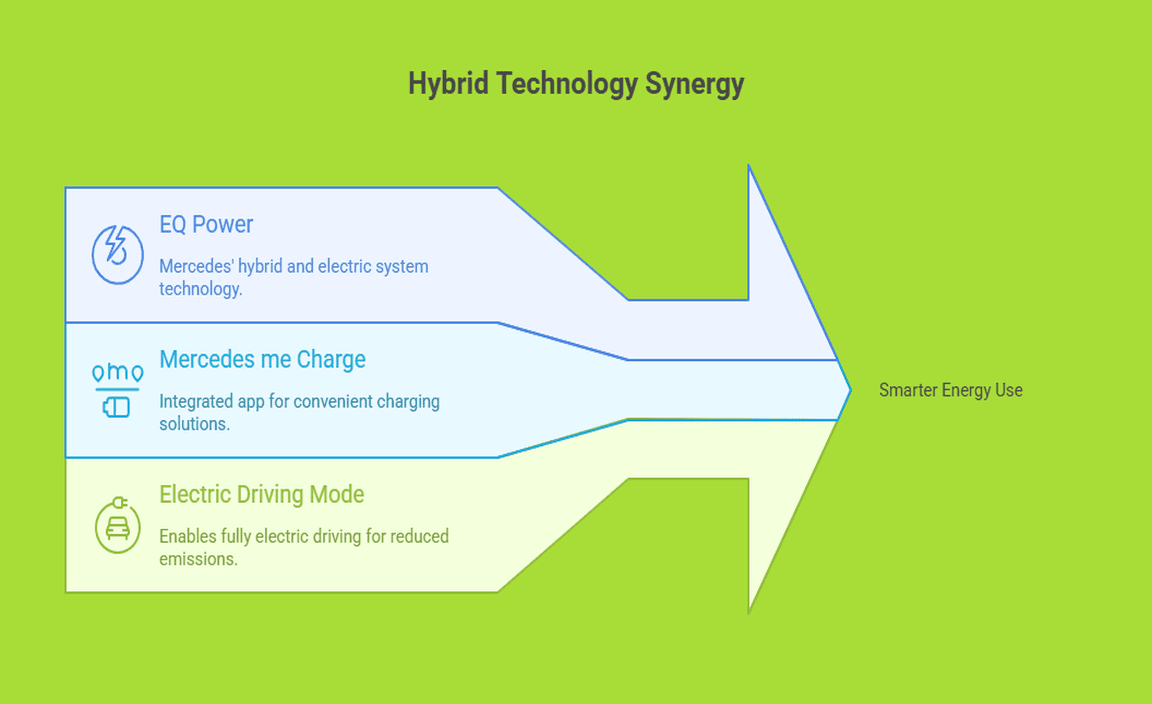
Environmental Impact
Choosing a plug-in hybrid helps reduce your carbon footprint. It lowers local air pollution, especially in traffic-heavy cities. Plus, fewer emissions help tackle global climate change.
Effects On Air Quality
You’ll literally breathe easier. Hybrid models cut down on NOx and CO2, especially during urban drives in electric mode. It’s like giving your city lungs a breather.
Role Of Evs In Reducing Emissions
With more EVs on the road, emissions drop. Simple math. Every driver that switches contributes to a larger clean air effort. And the A- and B-Class make that switch feel effortless.
Related Models And Alternatives
Looking beyond? Check out the Audi Q8 TFSIe if you want more bulk. The all-electric Polestar 2 offers a different Scandinavian flavor. Or step into a Mercedes GLA for a taller ride with similar hybrid tech.
Benefits Of Green Energy
The greener your electricity, the cleaner your drive. Charging from solar or wind reduces your impact further. And as grids get cleaner, so do EVs.
Incentives For Using Renewable Energy
Some regions offer discounts on charging when using renewable sources. Others provide subsidies for installing solar panels at home. It’s a win-win for your car and the planet.
Green Energy’s Effect On EV Adoption
More green energy = better EV performance = higher adoption. It’s a domino effect. As clean power becomes cheaper and more accessible, more drivers will switch to plug-ins and electric cars.
Market Trends And Future Outlook
The UK market is leaning heavily toward EVs and hybrids. Compact hybrid sales are booming. The A- and B-Class plug-in hybrids are among the most in-demand models, blending usability with eco-conscious design.
Popularity Of Evs In The UK Market
From big cities to rural towns, EV adoption is rising. More people want lower running costs, cleaner driving, and future-ready tech. Mercedes-Benz customers are leading that charge.
Future Prospects For Eco-Friendly Vehicles
Expect more range, faster charging, better AI integration, and maybe even solid-state batteries. Mercedes-Benz models will likely become smarter, cleaner, and more connected as part of the Mercedes-Benz Group vision.
Conclusion
Driving a Mercedes-Benz A- or B-Class plug-in hybrid is like having your cake and eating it too. You get the performance of petrol, the silence of electric, and the perks of both. With strong EV range, smart energy use, and that unmistakable Mercedes-Benz feel, these compact cars are leading the sustainable charge. And with rising consumer demand, the future looks electric—and unmistakably premium.
FAQs
- What Are The Main Features Of Mercedes A & B‑Class Plug‑In Hybrids?
Main features include a 1.3‑litre turbo petrol engine paired with a 75 kW electric motor, a 15.6 kWh high‑voltage battery, EQ Power hybrid system, MBUX infotainment with “Electric” and “Battery Level” drive modes, and a WLTP electric range of ~40 miles (60–77 km). - How Does The A 250 E Compare In Performance?
Performance makes the A 250 e cover 0–62 mph in around 6.6 s, reach a top speed of 146 mph (235 km/h), and offer 75 kW electric top‑speed capability. - What Electric Range Can Drivers Expect?
Electric range delivers roughly 37–43 miles (60–69 km WLTP), ideal for daily commutes without using petrol. - How Long Does Charging Take?
Charging time includes AC charging at 7.4 kW in ~1 h 45 min (10–100 %) and DC fast charging from 10–80 % in around 25 min. - How Practical Are These Plug‑In Hybrids?
Practicality keeps boot space nearly unchanged thanks to under‑seat battery placement. The fuel tank is reduced modestly, with mostly intact cargo room. - What Drivetrain Specs Define The Hybrids?
Drivetrain specs include 160 kW (218 hp) combined output, 450 Nm torque, and seamless integration of the electric motor replacing the conventional starter, housed in an 8‑speed dual‑clutch gearbox. - How Clean And Efficient Are These Hybrids?
Efficiency yields combined fuel consumption as low as 1.4–1.6 L/100 km, with CO₂ emissions around 32–36 g/km. - How Smart Is The Hybrid Driving System?
Smartness comes with EQ Power’s route‑based strategy using navigation data and variable recuperation modes (paddles behind steering wheel) for optimal electric usage. - What Does Mercedes’s Plug‑In Lineup Look Like?
Plug‑in lineup shows Mercedes planning over 10 PHEV variants by 2020, including A 250 e, A 250 e Saloon, B 250 e, plus upcoming S‑Class, C‑ and E‑Class EQ Power hybrids. - How Accessible Are The A And B Plug‑In Hybrids?
Accessibility stems from pricing starting around €36,944 for A‑Class hatch, €37,300 for saloon, and €37,664 for B‑Class, making luxury PHEVs more affordable